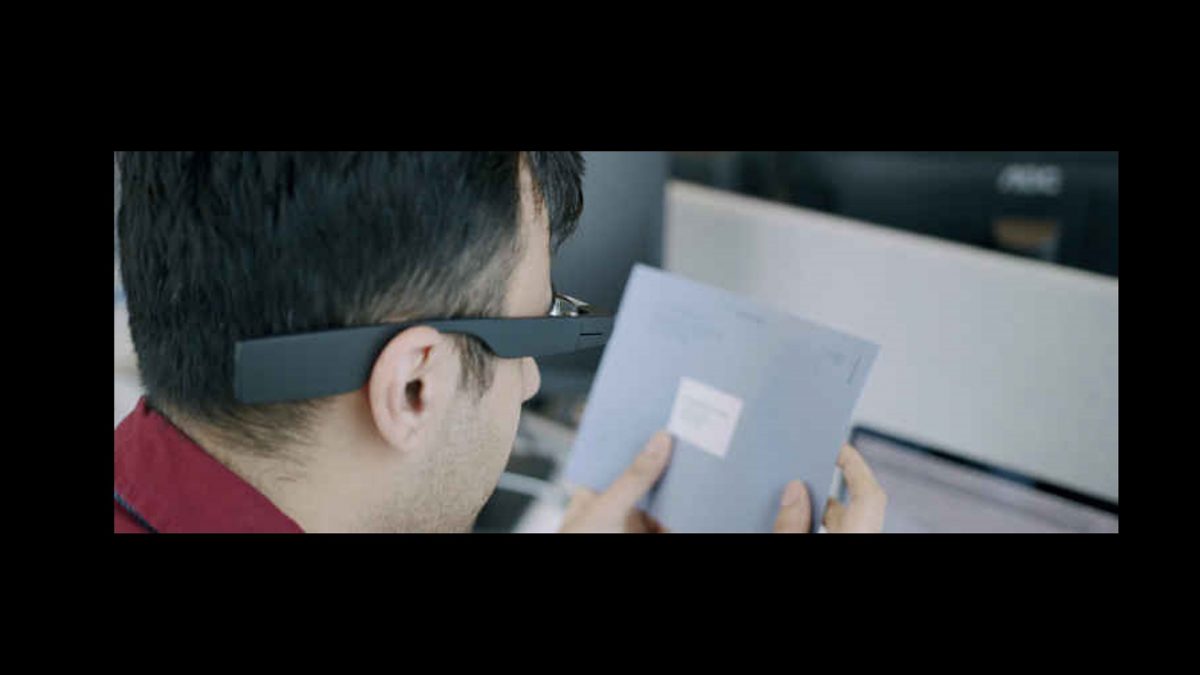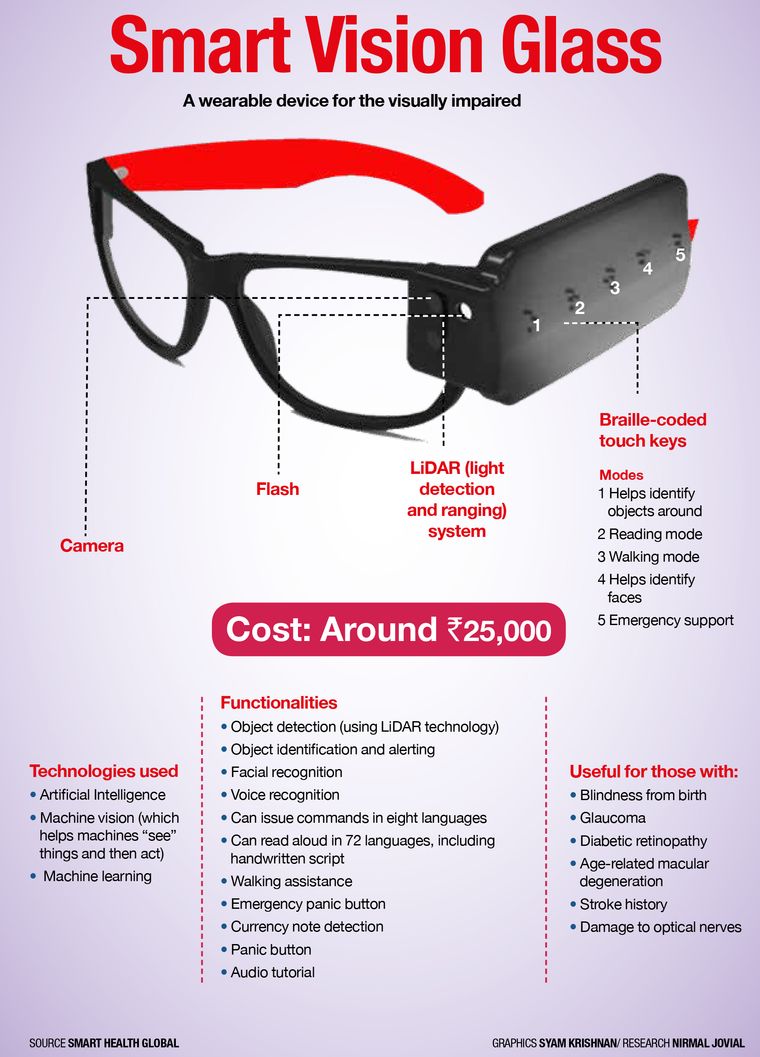The Future of Assistive Technology for the Blind: Empowering Independence
The Future of Assistive Technology for the Blind: Empowering Independence
Blog Article
Ingenious Solutions in Assistive Innovation for Visual Disability
The landscape of assistive modern technology for visual problems is developing swiftly, presenting a variety of ingenious options that boost ease of access and freedom. From sophisticated smart device applications that promote navigation to wearable gadgets created for real-time guidance, these tools are reshaping the experiences of those with visual impairments.
Improvements in Smartphone Applications
In recent years, developments in mobile phone applications have dramatically changed the landscape of assistive innovation for people with visual impairments. These applications leverage the powerful sensors and abilities of contemporary mobile phones to give customers with devices that boost independence and access in their day-to-days live.
Remarkable among these technologies are applications created for object recognition, which make use of the smartphone's camera to identify things and supply spoken summaries. Such attributes empower users to navigate their environments better, whether recognizing items in shops or locating individual possessions in your home. Additionally, text-to-speech applications have actually enhanced considerably, making it possible for individuals to record published text with their device's electronic camera and receive instant audio comments, consequently facilitating analysis and understanding.
Community-driven applications have actually fostered social communication and source sharing among individuals with visual disabilities, creating a supportive network that boosts their high quality of life. On the whole, smart device applications have ended up being crucial allies in advertising freedom and ease of access for people with visual impairments.
Wearable Tools for Navigation
Wearable tools for navigating have arised as a groundbreaking solution for individuals with visual impairments, providing hands-free aid that boosts mobility and orientation. These tools usually utilize innovative modern technologies, including GPS, ultrasonic sensors, and synthetic knowledge, to provide real-time comments and direction to users as they browse their atmosphere.
One notable instance of wearable navigation technology is clever glasses, which can detect barriers and relay auditory or haptic feedback to the wearer, enabling efficient and risk-free activity in numerous setups. Other gadgets, such as belts and vests furnished with sensors, can in a similar way notify customers of their surroundings by providing signals regarding close-by objects or modifications in surface.
In addition, several wearable devices integrate with smartphone applications, making it possible for customers to customize their navigating preferences and get customized path pointers. This personalization can substantially improve the customer experience, encouraging people to take a trip with better confidence and self-reliance.
As innovation remains to develop, the potential for wearable navigating gadgets to enhance the top quality of life for people with visual impairments remains considerable, leading the way for more easily accessible and comprehensive settings.
Smart Home Innovation Combination

Moreover, clever devices outfitted with responsive user interfaces or acoustic feedback give user-friendly communications that provide particularly to the requirements of those with visual disabilities. Smart refrigerators can announce their contents and expiration dates, while clever ovens can lead customers via the cooking process with audio directions.
Home automation systems, such as clever buzzers and security video cameras, offer assurance by allowing customers to get informs and access live feeds by means of their smart phones, enhancing individual security (AI-powered visual aids). Additionally, assimilation with smartphones and tablets makes sure that customers can manage their home setting from anywhere within their properties
As smart home innovation remains to develop, it holds the prospective to change the living experiences of individuals with visual problems, promoting independence and improving lifestyle in an increasingly linked globe.

Educational Equipment and Resources
Accessibility to efficient academic tools and resources is important for people with aesthetic problems, as it encourages them to engage totally in their understanding experiences. Various assistive technologies have been created to enhance accessibility and foster independent understanding. Screen readers, as an example, convert message into speech, allowing trainees to access digital material flawlessly. AI-powered visual aids. In addition, refreshable braille screens offer responsive comments, making it much easier for students to communicate with created material.
Additionally, educational web link software program especially made for aesthetically damaged users provides attributes such as high-contrast modes and personalized message sizes. These tools accommodate diverse knowing designs and make certain that students can tailor their academic experience to their needs.
In addition, accessibility to digital libraries and audio publications expands the range of readily available learning products, allowing students to check out topics detailed without the restrictions enforced by standard print sources. Joint platforms that integrate access features also promote group jobs, making sure that visually damaged students can contribute meaningfully together with their peers.
Neighborhood Support and Interaction
A durable network of neighborhood support and interaction is essential for individuals with visual impairments, promoting an inclusive atmosphere where they can prosper. Community companies, local advocacy groups, and volunteers play a critical function in offering resources, information, and companionship, which are crucial for improving the top quality of life for those influenced by aesthetic disabilities.
Interaction tasks such as workshops, get-togethers, and support system not only facilitate ability advancement yet also advertise social interaction, decreasing feelings of seclusion. These campaigns urge individuals to share experiences, obstacles, and successes, therefore enhancing neighborhood bonds. Additionally, collaborations with local organizations can result in greater availability in public spaces, additionally incorporating people with visual disabilities into the community.
Technology also improves community engagement through on-line systems that provide online assistance teams and resources, allowing individuals to attach despite geographical obstacles. By using both electronic and in-person options, areas can produce a detailed support network. Ultimately, fostering cooperation amongst different stakeholders-- consisting of households, educators, and medical care professionals-- guarantees that people with aesthetic problems receive the all natural support essential to navigate life successfully and with self-respect.
Verdict
Ingenious remedies in assistive innovation for pop over to these guys visual impairment dramatically improve the quality site web of life for people encountering these challenges. The integration of smartphone applications, wearable devices, smart home innovation, and academic tools promotes better freedom and access.
The landscape of assistive innovation for visual problems is evolving quickly, presenting a variety of cutting-edge options that improve accessibility and independence. Community-driven applications have actually cultivated social interaction and source sharing amongst individuals with visual problems, creating an encouraging network that boosts their quality of life. Overall, smartphone applications have actually become crucial allies in advertising freedom and availability for individuals with visual problems.
Numerous people with visual disabilities are finding better autonomy with the assimilation of clever home modern technology.Innovative remedies in assistive technology for visual disability considerably boost the quality of life for individuals facing these challenges.
Report this page